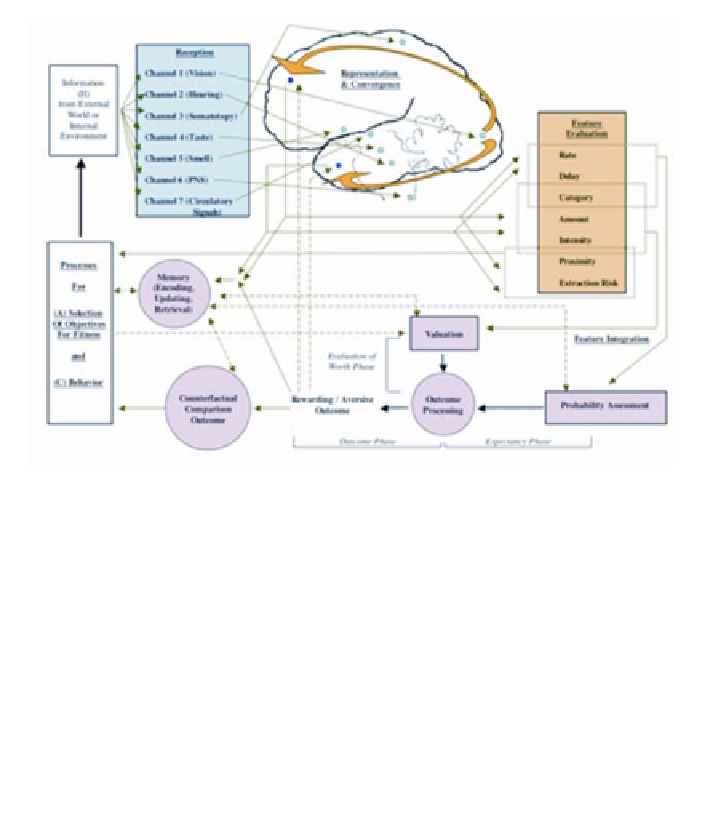Biomedical Engineering Reference
In-Depth Information
Figure 3
. The informational backbone for processing reward-aversion input (iBM). Reflecting one interpreta-
tion of research from evolutionary ecology (102,237) and behavioral finance (131,238,254), the informational
backbone is dissected into its theorized processes for sensory perception, memory, and reward/aversion as-
sessment. Solid lines connect subprocesses as steps in the processing of information, whereas dashed lines
represent subprocesses theorized to produce feedback leading to nonlinear system function (95,96). Postulated
early subprocesses (blue box and brain cartoon) include: (1) information reception over discrete channels and
representation (light blue points in cartoon of brain), (2) convergence of processed informational measures
such as color, contrast and detected motion for vision (over ventral and dorsal processing streams as yellow
arrows moving to dark blue points), and (3) convergence of represented information for construction of a
percept from distinct receptive channels (15,66,76,114,268). Subsequent subprocesses are postulated to in-
clude the extraction of informational features (yellow box) with motivational relevance, including rate, delay,
category, amount, and intensity information to be integrated during computation of probability functions and
valuation functions (pink boxes), along with input regarding proximity and extraction risk (i.e., "cost" assess-
ments) needed for general cost-benefit analyses (33,238). Features that are integrated in such computations
are grouped with dotted lines. Determination of rewarding and aversive outcomes is theorized to evolve
memory processes, particularly for evaluation of counterfactual comparisons (pink boxes) (170,171). See text
for further details. Figure adapted with permission from Breiter and Gasic (32).
expectation) subprocesses is combined continues to be a domain of active in-
quiry (238).
For the MIT model in Figures 2 and 3, a "reward" is defined as the positive
value that an animal attributes to a goal-object, an internal physical state, a be-
havioral act, or a cue associated with any of these. Rewards with a direct tempo-
ral connection to homeostatic regulation have a variable valuation dependent on
the physiological state of the organism and the organism's previous experience
with it (3,46). Although they are often referred to as "deficit states" connected to
the physiological needs of the organism (e.g., glucose level, oxygen saturation,
thermoregulation), they can be challenging to define in the case of social re-
wards (e.g., social or personal aspirations). The relationship of social rewards to

